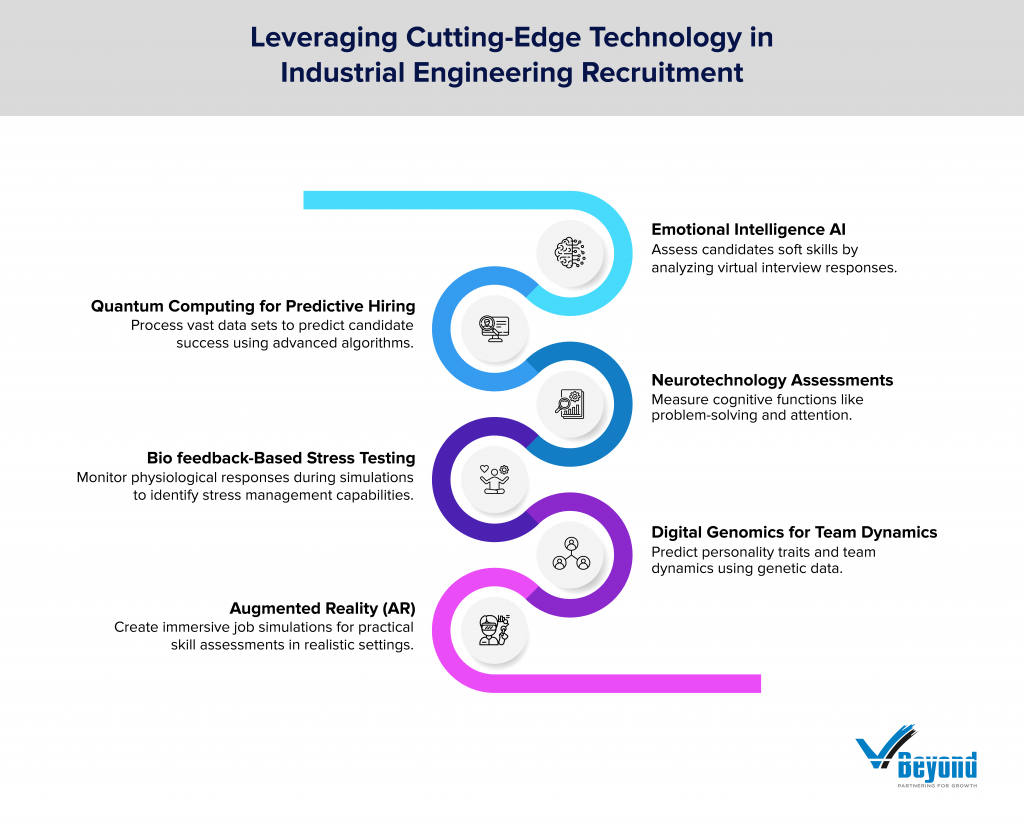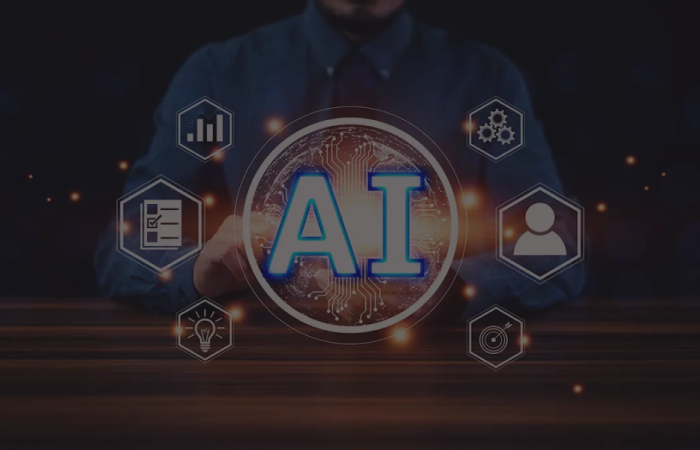Introduction
The global industrial engineering sector is accustomed to change, but today, the challenge lies in the complex factors driving this rapid pace. Halfway through 2024, industry leaders are grappling with supply chain disruptions, historic inflation, geopolitical conflicts, localization pressures, carbon reduction demands, and persistent talent shortages.
These challenges are creating significant workforce complications within the industrial sector. Companies must now navigate a landscape where talent shortages are more pronounced, and the demand for diverse, equitable, and inclusive practices is growing. Additionally, the push for sustainable operations under ESG principles is reshaping workforce expectations. Industrial firms are dealing with generational shifts, where younger workers prioritize purpose-driven roles and inclusive, sustainable workplace cultures.
These dynamics have transformed the hiring landscape, making it more crucial than ever for organizations to innovate their industrial engineering recruitment strategies. Traditional methods are no longer sufficient to meet the evolving demands of the industrial engineering sector. Companies must adopt new approaches to attract and retain top industrial engineering talent, ensuring they can navigate and thrive amidst these multifaceted pressures.
In this blog, we will explore best practices for streamlining the industrial engineering hiring process. We will delve into the challenges faced, discuss effective strategies, and highlight the role of technology and recruitment agencies in achieving excellence in industrial engineering talent acquisition strategies.
Workforce Amplifying Technology Outcomes
According to Deloitte (in its 2024 Global Workforce Trends report), the evolving dynamics of our global marketplace continue to transform the nature of work, with rapid technological advancements and interconnectedness playing a significant role in shaping workforce trends. The Rockwell Automation State of Smart Manufacturing report, published in engineering.com, estimates that approximately 94% of respondents expect to maintain or grow their workforce due to the adoption of smart manufacturing technology. This trend is further evidenced by the fact that 95% of companies are currently using or evaluating smart manufacturing technologies, up from 84% in 2023.
The integration of these advanced technologies is not only reshaping operations but also amplifying the outcomes and efficiency of the workforce. The shift is particularly relevant for industrial engineers, who play a pivotal role in implementing and managing these smart technologies. According to the U.S. Bureau of Labor Statistics, the median annual wage for industrial engineers was $99,380 in May 2023, reflecting the high demand and value placed on their expertise. Furthermore, the job outlook for industrial engineers is projected to grow by 12% from 2022 to 2032, much faster than the average for all occupations.
These trends underscore the critical intersection of technology and workforce development in the industrial sector. As companies continue to adopt smart manufacturing technologies, the need for skilled industrial engineers becomes even more pronounced. Convergence is driving organizations to innovate their recruitment and retention strategies to attract top talent capable of navigating and leveraging these technological advancements.
Understanding the Challenges in Industrial Engineering Hiring
With nearly half the year behind us, the industrial sector landscape has become increasingly complex. This is reflected in the significant challenges in hiring top talent, especially industrial engineering. One of the primary issues is the persistent skill shortage. As technologies such as robotics, AI, and digital twins become more integrated into industrial operations, the demand for specialized skills in digital transformation is soaring. This has created a high demand for industrial engineers who are not only proficient in traditional engineering principles but also adept at using advanced technological tools.
Market volatility further complicates the hiring process. Fluctuating raw material costs and labor expenses add layers of uncertainty, making workforce planning more difficult. Industrial engineering roles now require a deep understanding of supply chain resilience and cost optimization, adding another layer of specialization that recruiters must seek in candidates.
The push for sustainable operations under Environmental, Social, and Governance (ESG) principles is reshaping workforce expectations. Companies are increasingly looking for engineers who can drive green initiatives and contribute to sustainability goals. The drive for green transformation necessitates the recruitment of talent with expertise in sustainable practices and technologies, intensifying the competition for skilled professionals.
Generational shifts and evolving workforce dynamics also play a critical role. Younger workers, who prioritize purpose-driven roles and inclusive workplace cultures, are entering the job market with different expectations compared to previous generations. This means increased focus on creating diverse, equitable, and inclusive work environments to attract and retain new talent.
In addition, the adoption of new business models, like Production-as-a-Service (PaaS) and additive manufacturing, requires engineers with a diverse skill set that includes both technical and customer-focused abilities. The emphasis on improving customer experience in industrial settings means that candidates must also be proficient in customer experience management, adding a new dimension to the hiring process.
Challenges in Using Innovative Technologies for Hiring
While innovative technologies such as AI-driven tools and applicant tracking systems can significantly enhance the hiring process, they also present certain challenges. Industrial engineering companies may face difficulties in integrating these technologies into their existing systems, requiring substantial investment in both time and resources. Additionally, there is a learning curve associated with new technologies, and ensuring that hiring teams are adequately trained can be a hurdle. Furthermore, over-reliance on automated systems might inadvertently introduce biases or overlook soft skills that are crucial for engineering roles.
The use of advanced technologies in recruitment also brings up privacy and regulatory issues. Companies must navigate complex data protection laws and ensure that their hiring practices comply with regulations such as GDPR or CCPA. Handling large volumes of personal data requires robust cybersecurity measures to prevent data breaches. Additionally, maintaining transparency with candidates about how their data is used and stored is crucial to building trust and ensuring legal compliance
Recruitment Strategies in Industrial Engineering: A Mid-Year Review of Hiring Best Practices
The various factors outlined above indicate the intensifying dynamism of the industrial engineering sector as 2024 marches on. Their convergence underscores the need for even more innovative and effective industrial engineering recruitment techniques as the year progresses. Organizations must adapt to the changing demands of the industrial engineering landscape, ensuring they can attract and retain the specialized talent required to thrive amid the growing challenges.
1) How well-defined are your criteria?
Creating precise and detailed job descriptions is crucial for attracting the right candidates in the industrial engineering sector. Beyond the basic outline of skills and qualifications, an effective job description delves into specific and lesser-known elements that attract high-quality candidates and set your organization apart.
Firstly, highlight the impact and outcomes associated with the role. Describe how the industrial engineer will contribute to key projects, improve processes, or drive innovation. This attracts candidates motivated by meaningful work and tangible results. Incorporate examples of ongoing or upcoming projects to provide a clearer picture of the work environment and challenges.
Discuss professional growth opportunities within the role, such as training programs, mentorship, and career advancement pathways. This appeals to top talent seeking organizations that invest in employee growth. Use data-driven insights to specify unique aspects of your work environment, such as cutting-edge technology or innovative sustainability practices, attracting candidates eager to work with the latest methodologies.
Tailor job descriptions to include metrics and performance indicators critical to the role, such as “reduce production time by 20% within six months.” This demonstrates clear expectations and values measurable outcomes. Describe team dynamics and collaboration opportunities, emphasizing a collaborative work environment to attract candidates who value teamwork and innovation.
Include insights about work-life balance and flexibility, mentioning flexible hours or remote work options to appeal to job seekers. Showcase the company’s achievements and vision to inspire candidates who want to be part of a successful, forward-thinking organization.
2) Does Modern Tech Power Your Recruitment?
Given the competition in industrial engineering, leveraging advanced technologies can set organizations apart. Integrating tools like Emotional Intelligence AI, Quantum Computing for Predictive Hiring, Neurotechnology Assessments, Biofeedback-Based Stress Testing, Digital Genomics for Team Dynamics, and Augmented Reality (AR) in recruitment enhances the hiring process and attracts top talent, ensuring the success of industrial engineering talent acquisition strategies.
Emotional Intelligence AI assesses candidates’ soft skills by analyzing virtual interview responses, crucial for teamwork and leadership roles. Quantum Computing processes vast data sets to predict candidate success, attracting tech-savvy engineers. Neurotechnology Assessments measure cognitive functions such as problem-solving and attention, which are valued in complex engineering roles.
Biofeedback-Based Stress Testing monitors physiological responses during simulations to assess stress management, identifying engineers who excel under pressure. Digital Genomics uses genetic data to predict personality traits and team dynamics, intriguing candidates interested in innovative teambuilding. AR creates immersive job simulations, providing practical skill assessments in realistic settings.
These technologies not only enhance the hiring process but also appeal to industrial engineers who value comprehensive, innovative approaches. They demonstrate a commitment to excellence and make the company more attractive to forward-thinking candidates.

3) Have You Mastered the Art of Talent Sourcing?
Finding and attracting top industrial engineering talent requires a multifaceted approach that leverages various sourcing strategies. To ensure a comprehensive talent pool, organizations should utilize advanced methods beyond traditional job boards, social media platforms, professional networks, and recruitment agencies. This is essential for optimizing industrial engineering hiring.
Niche Job Boards and Industry-Specific Platforms: Beyond general job boards, use niche platforms like Engineering.com and iHireEngineering, which cater specifically to engineering professionals. These platforms often attract candidates with specialized skills who are not found on mainstream job sites.
Talent Mapping and Competitive Intelligence: Utilize talent mapping to identify and track potential candidates within competing organizations. The proactive approach involves gathering competitive intelligence to understand where top talent is currently employed and monitoring their career progression and industry involvement. This strategy allows companies to target high-performing individuals and approach them with tailored opportunities.
Social Media Analytics and AI-Driven Sourcing: Leverage AI tools to analyze social media activity and identify potential candidates who engage with relevant content, participate in industry discussions, or follow specific engineering influencers. AI-driven sourcing tools can scan profiles and predict which professionals are most likely to be interested in new opportunities based on their online behavior and career trajectories.
Hackathons and Engineering Competitions: Host or participate in hackathons and engineering competitions to identify top talent. These events attract highly skilled engineers who excel in problem-solving and innovation. By observing their performance in real-time challenges, recruiters can assess their skills and cultural fit more accurately than through traditional interviews.
Collaborations with Universities and Research Institutions: Establish partnerships with leading engineering universities and research institutions to access a pipeline of emerging talent. Collaborate on research projects, offer internships, and participate in career fairs to build relationships with top students and faculty. This strategy helps in identifying and nurturing potential hires early in their careers.
Employee Referral Programs Enhanced with Gamification: Enhance traditional employee referral programs by incorporating gamification elements. Offer rewards and recognition to employees who refer successful candidates. Implementing leaderboards and point systems can create a competitive and engaging referral culture, motivating employees to actively participate in sourcing efforts.
Recruitment Agencies with Specialized Knowledge: Partner with recruitment agencies, like VBeyond Corporation, that specialize in industrial engineering and have a deep understanding of the industry’s nuances. These agencies can provide insights into emerging trends, candidate expectations, and effective recruitment strategies. Their specialized knowledge ensures that only the most suitable candidates are presented, reducing the time-to-hire and improving the quality of hires.
4) Are Effective Competency Evaluations Eluding You?
Technical assessments help validate a candidate’s expertise and practical skills, reducing the risk of hiring underqualified individuals. They provide a clear measure of a candidate’s ability to perform specific tasks and solve real-world engineering problems, which is crucial in a field that demands precision and innovation. This ensures the candidates are fit for performing from day one.
Assessment Tools and Methods:
- Simulation Software: Tools like MATLAB, Simulink, and AutoCAD can be used to create simulations of engineering problems. Candidates can be asked to develop solutions or optimize processes within these virtual environments.
- Coding Challenges: Platforms like HackerRank and Codility offer coding challenges tailored to engineering tasks. These challenges assess a candidate’s programming skills, which are increasingly important in modern industrial engineering roles.
- Technical Interviews: Conducting live technical interviews where candidates solve problems on a whiteboard or use software tools to demonstrate their thought process and technical approach.
- Project-Based Assessments: Assigning candidates a project to complete within a specific timeframe. This can involve designing a system, optimizing a process, or troubleshooting an existing setup. Such projects offer insights into a candidate’s practical skills and ability to work under pressure.
Tips for Effective Evaluations:
- Define Clear Objectives: Ensure the assessment aligns with the specific technical skills and knowledge required for the role.
- Use Real-World Problems: Incorporate scenarios and problems that candidates are likely to encounter in the job to better gauge their practical abilities.
- Combine Multiple Assessment Methods: Using a mix of simulations, coding challenges, and technical interviews provides a more comprehensive evaluation of a candidate’s skills.
- Provide Clear Instructions: Ensure candidates understand the expectations and criteria for the assessment, allowing them to focus on demonstrating their abilities.
5) Is Conventional Onboarding Holding You Back?
Conducting virtual interviews for industrial engineering roles necessitates specialized approaches that cater to the technical and practical demands of the field. Use advanced virtual simulation tools that allow candidates to demonstrate their problem-solving skills in scenarios specific to industrial engineering, such as troubleshooting machinery, optimizing production lines, or managing digital twins of manufacturing systems.
Integrate AI-driven analysis to assess candidates’ technical proficiency and cognitive problem-solving patterns during these simulations. Employ virtual whiteboards for collaborative problem-solving tasks that mirror on-the-job challenges and include situational judgment tests tailored to industrial engineering contexts to evaluate candidates’ practical decision-making abilities under pressure.
Effective onboarding for remote industrial engineering roles involves immersive and interactive strategies tailored to the unique demands of the field. Develop a virtual reality (VR) onboarding program that provides a 360-degree view of the company’s facilities, allowing new hires to virtually explore production floors, meet team members, and understand the workflow.
Implement digital twins for training purposes, enabling new engineers to interact with exact replicas of machinery and systems they will be working with. Utilize advanced learning management systems (LMS) that offer modules on industry-specific regulations, safety protocols, and engineering best practices.
Personalized onboarding roadmaps that align with the specific projects and technologies the new hire will work on can significantly enhance their integration and productivity. Regular virtual workshops and interactive Q&A sessions with senior engineers help new hires acclimate to the company’s technical environment and culture.
6) If Only You Knew How to WOW Your Candidates…
Creating a seamless and positive candidate experience in industrial engineering is essential. These professionals often seek roles that challenge their problem-solving abilities and offer opportunities for innovation. Therefore, a well-structured and engaging hiring process is critical.
Strategies for Improving Communication
- Job Shadowing Invitations: Offer candidates the chance to participate in a day of virtual job shadowing. This allows them to experience a typical day at your company and understand the specific demands and rewards of the role.
- Technical Discussions in Job Descriptions: Clearly outline the technical challenges and projects they will tackle. Include information about the machinery, software, and methodologies they will be using. This specificity attracts candidates with the right expertise and interest.
- Regular Updates with Technical Insights: Keep candidates informed about their application status and include insights on how their skills align with current projects. This shows that you value their expertise and are considering their fit for specific projects.
Feedback and Engagement
- In-Depth Technical Feedback: Provide candidates with detailed feedback on their technical assessments. Highlight how their skills align with industry standards and your company’s specific needs, which can help them see a clear path for their career development.
- Problem-Solving Simulations: Incorporate real-world engineering problems into the interview process. Allow candidates to work through simulations of the issues they will face on the job, providing a realistic preview of their potential role.
- Interactive Facility Walkthroughs: Use virtual reality or detailed video tours to showcase your facilities. Highlight advanced technologies, automation processes, and safety measures. This can significantly boost a candidate’s interest and excitement about joining your team.
Ongoing Candidate Engagement
- Webinars with Industry Experts: Host webinars featuring your top engineers discussing current projects, technological advancements, and industry trends. This not only engages candidates but also positions your company as a leader in industrial engineering.
- Customized Content: Share industry-specific content such as detailed case studies, technical papers, and success stories from your engineering team. This tailored content keeps candidates informed and interested in your company’s work.
- Professional Development Opportunities: Highlight opportunities for ongoing training and professional development. Showcase your commitment to advancing your engineers’ skills through certifications, workshops, and continuous learning programs.
7) Still, Thinking Industrial Engineering Can Survive Without Inclusion?
Diversity and inclusion are essential for high-performing industrial engineering teams, driving innovation and productivity by bringing varied perspectives to complex challenges.
Implementing Inclusive Hiring Practices
- Targeted Outreach Programs: Partner with organizations like the Society of Women Engineers (SWE) and the National Society of Black Engineers (NSBE) to reach underrepresented groups in industrial engineering.
- Skill-Based Assessments: Use practical tests and simulations relevant to industrial engineering to evaluate candidates, providing a more accurate measure of their abilities and reducing bias.
- Diverse Recruitment Teams: Ensure your recruitment team is diverse to provide insights into attracting and evaluating candidates from various backgrounds effectively.
- Inclusive Job Descriptions: Emphasize the value of diverse perspectives and inclusive teamwork in job descriptions, highlighting how diverse experiences can address specific industrial engineering challenges.
Attracting Diverse Talent
- Showcase Diverse Projects: Highlight successful projects led by diverse teams to attract candidates who see themselves reflected in your workforce.
- Flexible Work Arrangements: Offer flexible work options to cater to diverse needs, attracting a broader range of candidates.
- Diversity Scholarships and Internships: Establish programs targeted at underrepresented groups to create a pipeline for diverse talent.
8) Do You Track Success or Wing It?
Continuous improvement is essential in the recruitment process for industrial engineering roles. Regularly refining hiring strategies ensures organizations attract and retain top talent, staying competitive in a rapidly evolving field.
Methods for Tracking and Measuring Recruitment Success
- Advanced Metrics Specific to Industrial Engineering:
- Project Impact Assessments: Evaluate new hires based on their contributions to specific engineering projects. Tools like Siemens Teamcenter or Dassault Systèmes’ ENOVIA can track project metrics such as process optimization and cost reduction.
- Skill Utilization Rate: Measure how effectively new hires’ specialized skills are utilized in projects using engineering-specific Enterprise Resource Planning (ERP) systems like IFS Applications.
- Candidate Experience with Technical Assessments:
- Technical Assessment Platforms: Use platforms like Codility or HackerRank for Work to conduct coding challenges and technical assessments tailored for engineering roles. Gather feedback using integrated survey tools.
- Simulation-Based Testing: Implement simulation-based assessments using tools like SimulTrain or MATLAB for real-world engineering problem-solving.
- Source Effectiveness for Niche Skills:
- Engineering-Specific Job Boards: Utilize niche job boards like EngineeringJobs.net to find candidates with specialized skills. Analyze these channels using built-in analytics tools.
- University Partnerships: Partner with leading engineering schools and use platforms like Handshake to manage and track engagements.
- Retention and Performance Analysis:
- Engineering Performance Metrics: Track KPIs such as mean time to repair (MTTR) and Six Sigma contributions using tools like Minitab.
- Retention Analysis: Use Tableau or Power BI to visualize retention data for industrial engineers, identifying trends and improvement areas.
- Continuous Learning and Development for Recruiters:
- Industry-Specific Training Programs: Offer courses on the latest trends and technologies in industrial engineering through platforms like Coursera and edX.
Conclusion
Entering the latter half of 2024, the future of industrial engineering hiring stands at the intersection of profound socio-political shifts, rapid technological advancements, and a steadfast commitment to DEI and ESG principles. The anticipated surge in AI and automation will demand not only technical acumen but also adaptability and ethical foresight from candidates.
Companies must harness innovative recruitment strategies to attract engineers who are not just skilled, but visionary and inclusive. In the evolving landscape, the ability to integrate diverse perspectives and sustainable practices will be pivotal. Organizations that pioneer these holistic approaches will not only lead the industry but will also redefine what it means to be at the forefront of industrial engineering excellence.
Ready to transform your industrial engineering hiring process? Partner with VBeyond Corporation to access top talent and innovative recruitment strategies that drive success. Contact us now!


